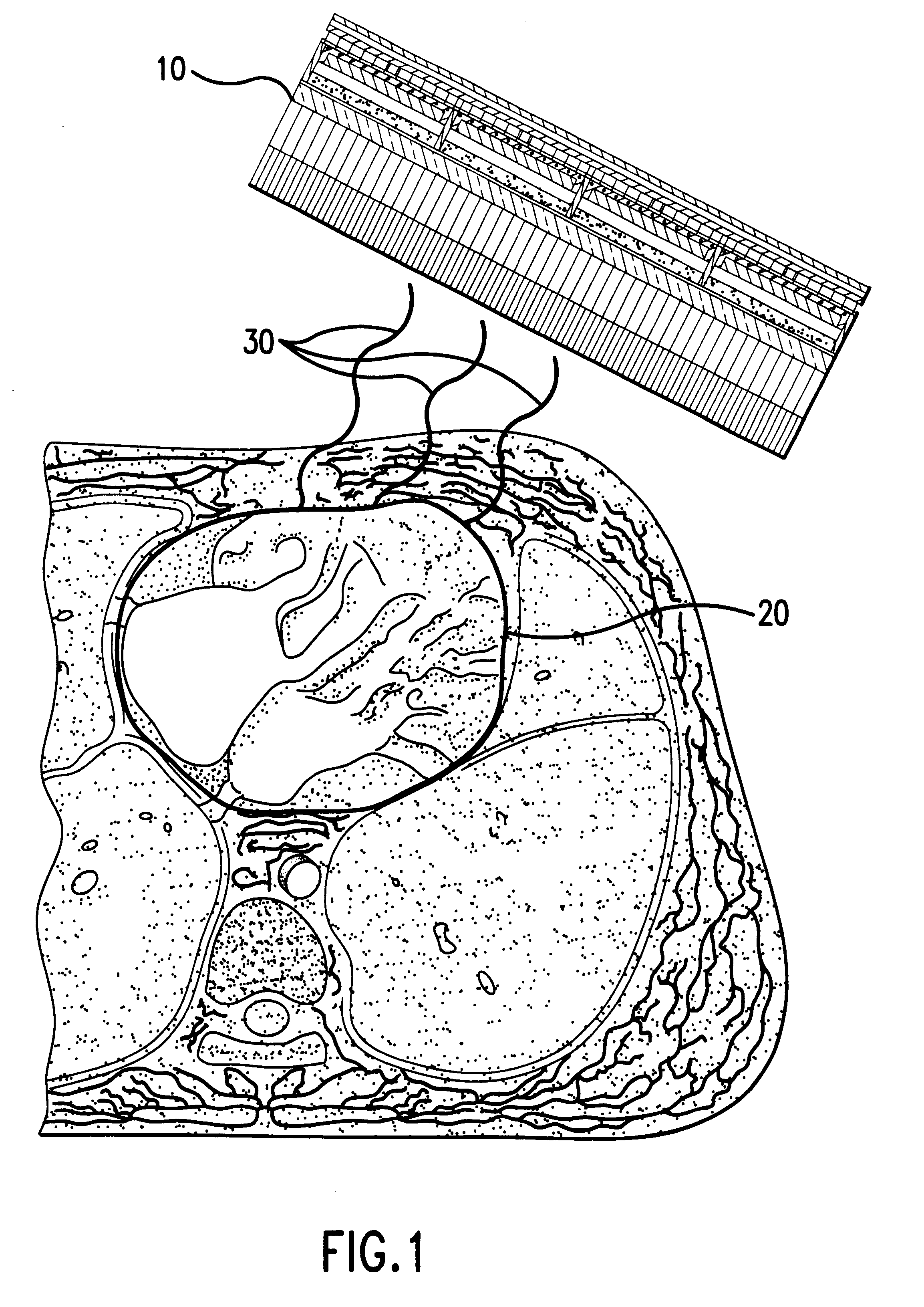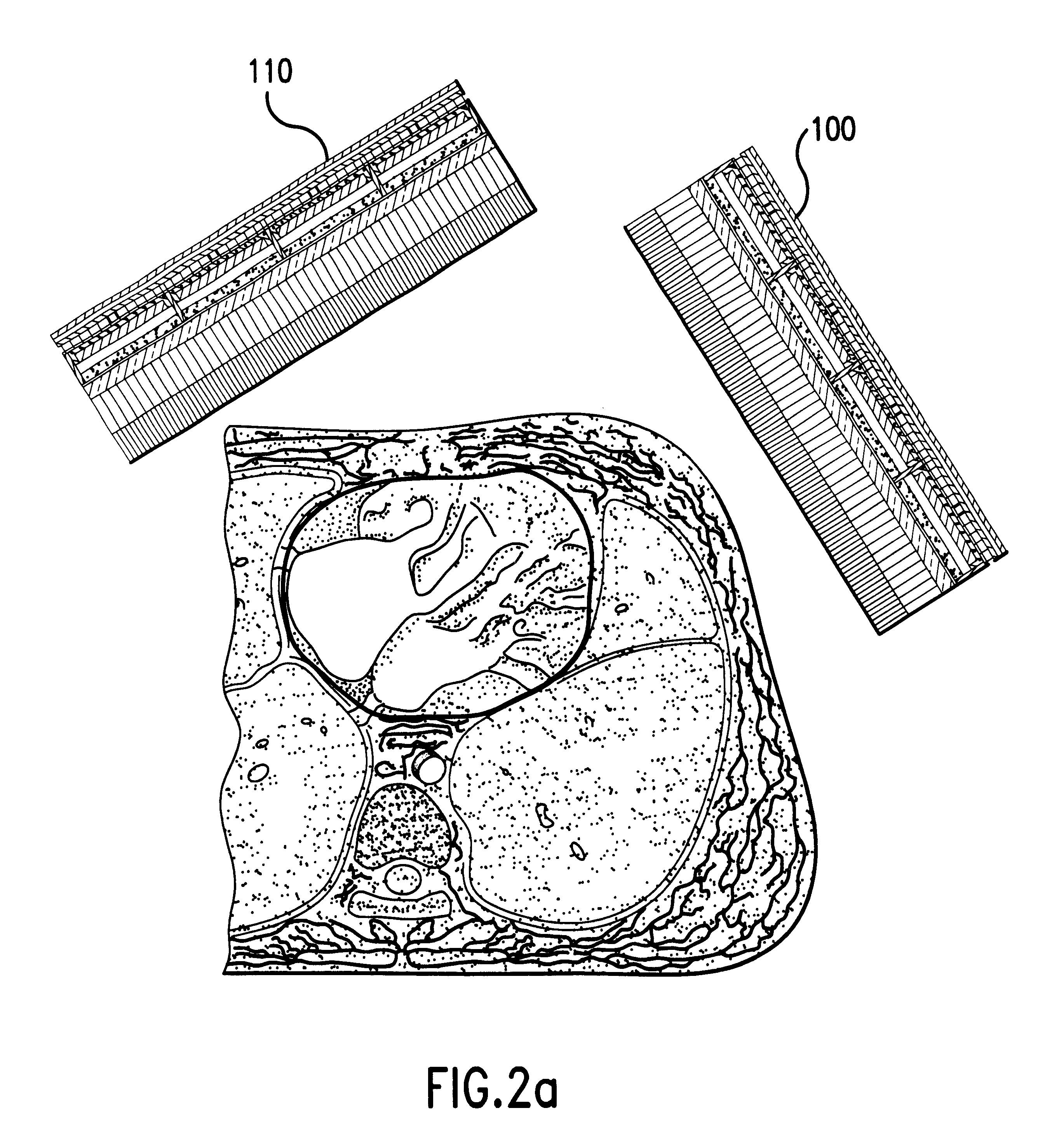Cardiovascular imaging and functional analysis system
a functional analysis and cardiac imaging technology, applied in the field of medical diagnostic and screening apparatus and methods, can solve the problems of crystals, position-based, and pixellated scintillation, and the improvement of detector hardwar
- Summary
- Abstract
- Description
- Claims
- Application Information
AI Technical Summary
Benefits of technology
Problems solved by technology
Method used
Image
Examples
Embodiment Construction
To enhance further the understanding of the cardiovascular imaging and functional analysis system disclosed herein, the following example of a specific embodiment of the present invention is presented. As disclosed, the example presented is a Cardiovascular Non-Invasive Screening Probe System and Method for Coronary Artery Disease.
The components of the exemplary Non-Invasive Screening Probe System include the following:
Two dedicated gamma probes
Fast signal processing electronics and fast data acquisition system
Gantry for control electronics and computer
Support arm(s) for the detector probes
Computer system with data processing algorithm
Digital data storage system
Hardcopy printer
The exemplary Non-Invasive Screening Probe System, as proposed, will provide an economical instrument to ascertain coronary artery disease. During the screening procedure, the patient is injected intravenously with a bolus of radioactive tracer (e.g., with several ml of 1-20 mCi of Tc-99m DTPA (15-20 min half ...
PUM
 Login to View More
Login to View More Abstract
Description
Claims
Application Information
 Login to View More
Login to View More - R&D
- Intellectual Property
- Life Sciences
- Materials
- Tech Scout
- Unparalleled Data Quality
- Higher Quality Content
- 60% Fewer Hallucinations
Browse by: Latest US Patents, China's latest patents, Technical Efficacy Thesaurus, Application Domain, Technology Topic, Popular Technical Reports.
© 2025 PatSnap. All rights reserved.Legal|Privacy policy|Modern Slavery Act Transparency Statement|Sitemap|About US| Contact US: help@patsnap.com



